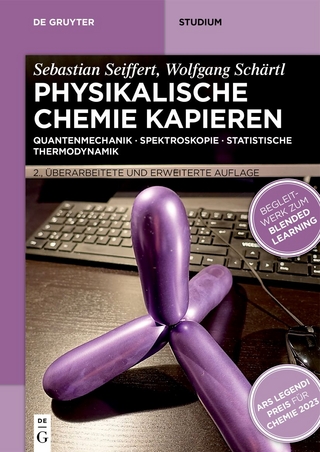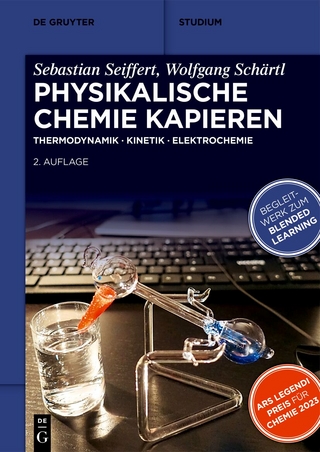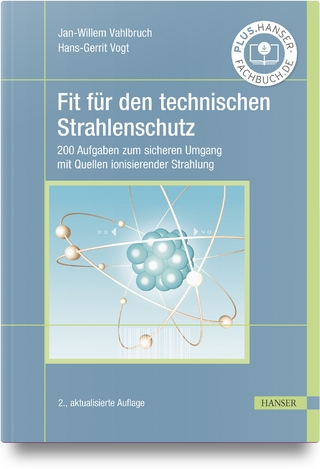
Nontraditional Activation Methods in Green and Sustainable Applications
Elsevier Science Publishing Co Inc (Verlag)
978-0-12-819009-8 (ISBN)
Highlighting the usefulness and adaptability of these methods for a range of practical applications, this book is a practical guide for both those involved with the design and application of synthetic methodologies and those interested in the implementation and impact of green chemistry principles in practice, from synthetic and medicinal chemists, to food developers and environmental policy planners.
Dr Torok received his Ph.D. from the University of Szeged, Hungary in Organic Chemistry/Heterogeneous Catalysis in 1995. After receiving his Ph.D. he did postdoctoral training with the 1994 Nobel Laureate George Olah at the University of Southern California in Los Angeles working on the development of environmentally benign alkylate gasoline production. He has held various faculty appointments at Michigan Technological University and the University of Massachusetts Boston, where he is currently a Professor of Chemistry. In 2011/12 he was a visiting professor at the Massachusetts Institute of Technology working with the 2005 Nobel Laureate Richard Schrock on the development of new alkene metathesis catalysts. His main research focus is on the design of new green chemistry processes for the synthesis of fine chemicals and pharmaceuticals. The major tools applied in his research are heterogeneous catalysis (both metal and solid acid), catalytic hydrogenation, the application of aqueous medium in organic synthesis and unusual activation methods such as microwave and ultrasonic irradiation. He has published over 150 papers and book chapters, many of them in the journal Green Chemistry and Green Chemistry related books. Dr Schäfer received his Dipl.-Ing. degree in chemistry after studies at the Technical University Darmstadt and University Bordeaux 1. Subsequently he moved to University of Strasbourg and worked on metal-mediated cyclization reactions under the supervision of Michel Miesch. After obtaining his PhD from the University of Strasbourg in 2013, he moved to the University of Massachusetts Boston to work as a postdoctoral researcher with Béla Török. He is currently a lecturer and research scientist at UMass Boston, where his research interests are in the development of new methods for green transformations with a focus on catalytic hydrogenation in water.
1. Advantages of non-traditional activation methods in green and sustainable chemistry: an introduction
2. Activation of chemical reactions on solid catalysts under microwave irradiation
3. Recent Advances in Multicomponent Microwave Assisted Ugi Reactions
4. Microwave-assisted Flow Systems
5. Sonocatalytic approach and ultrasonically-assisted methods in producing fine chemicals.
6. The catalytic production of Biofuels (Biodiesel and Bioethanol) using Sonochemical, Microwave and Mechanical methods
7. A new color in green chemistry: Photochromic molecular switches as components of multifunctional catalytic systems.
8. Photochemical rearrangements
9. Electrochemical activation in organic synthesis applications
10. Electrochemical anodic oxidative fluorination and trifluoroalkylation of organic compounds
11. In situ investigations of mechanochemical reactions
12. From solution-based non-conventional activation methods to mechanochemical procedures: the hydantoin case’
13. Application of mechanochemical activation in synthetic organic chemistry
14. Combination of mechanochemical and ultrasonic activations
15. Asymmetric Synthesis By Nontraditional Activation Methods: Ultrasonic, Microwave, Electro-, Photo- and Mechanochemically activated Reactions
16. High hydrostatic pressure in food industry applications
| Erscheinungsdatum | 18.01.2021 |
|---|---|
| Reihe/Serie | Advances in Green and Sustainable Chemistry |
| Sprache | englisch |
| Maße | 152 x 229 mm |
| Gewicht | 1000 g |
| Themenwelt | Naturwissenschaften ► Chemie ► Physikalische Chemie |
| ISBN-10 | 0-12-819009-4 / 0128190094 |
| ISBN-13 | 978-0-12-819009-8 / 9780128190098 |
| Zustand | Neuware |
| Informationen gemäß Produktsicherheitsverordnung (GPSR) | |
| Haben Sie eine Frage zum Produkt? |
aus dem Bereich


